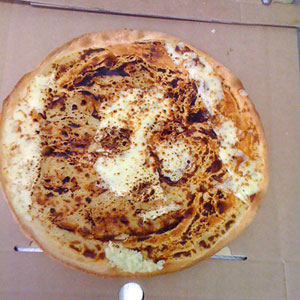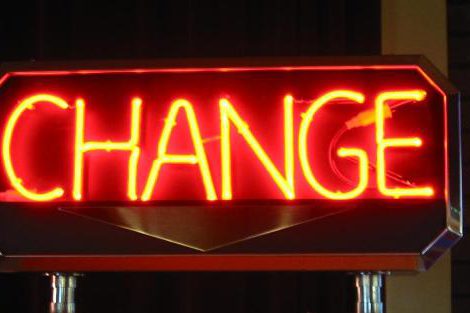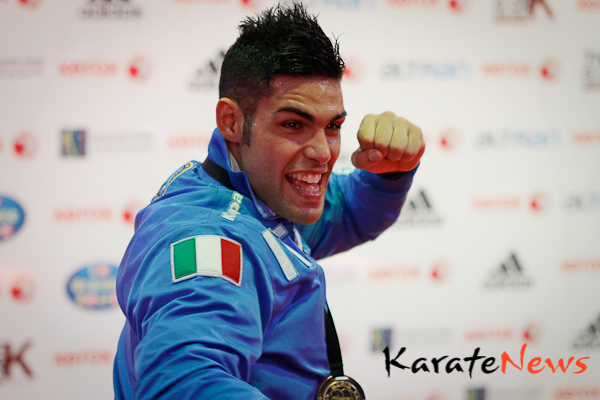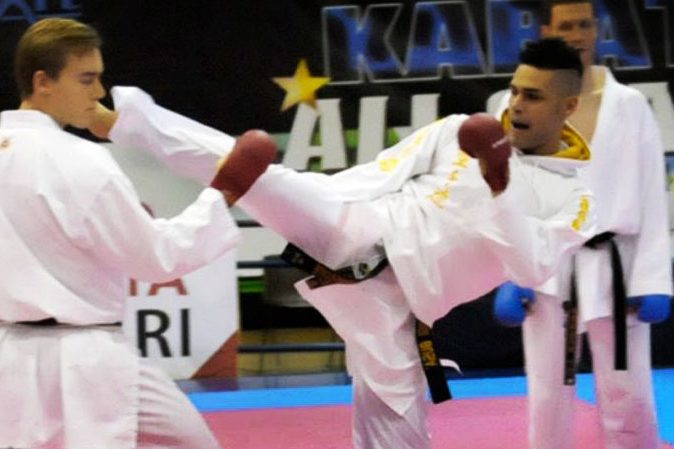People claim they can see the face of Jesus Christ in a three-cheese pizza.
Are they crazy? I think so.
People claim they can see the face of Virgin Mary in a toasted cheese sandwich.
Are they nuts? Most likely.
People claim they can make out the word “Allah” in a piece of meat.
Are they wacko? Yes indeed.
And then, of course, people claim they can see hidden, invicible or “secret” techniques in the traditional kata of Karate.
Are they insane, deranged and confused?
Yes, yes and yes.
Because there is no such thing as “secret” techniques in a kata.

Now, before we go any further, let me clarify that I’ve been saying this for years. There is no such thing as “hidden” movements in kata. It’s a total myth that just makes no sense. Oh, did I mention it’s stupid too? Yet, people still keep asking me about these reportedly “hidden” movements, techniques or meanings in a kata (as related to the bunkai [application] of the kata) that for some reason have been “disguised” by some clever old Chinese ninja master in a quest for keeping the “deadly techniques” of said kata from ending up in “wrong hands”.
Bull.
Crap.
That’s what I call it.
You see, this phenomenon is neither new nor rare; Human beings all over the world have been “seeing” things which do not exist (except in their imagination) for as long as mankind has been able to see. In fact, there is even a fancy scientific term for it, namely ‘apophenia‘: “the experience of seeing meaningful patterns or connections in random or meaningless data”.
Taste it.
Apophenia…
According to almighty sensei Wikipedia, the term apophenia was first coined in 1958 by Klaus Conrad, a German neurologist and psychiatrist with important contributions to neuropsychology and psychopathology, who defined it as the “unmotivated seeing of connections” accompanied by a “specific experience of an abnormal meaningfulness”, but it has come to represent the human tendency to seek patterns in random nature in general, as with gambling, paranormal phenomena, religion, and even attempts at scientific observation.
And yes, even kata.
Because we are so darn bad at understanding the meaning of most kata.
Which is exactly why questionable “grandmasters” all over the world keep adding these “hidden” techniques to their sacred teachings.

Which, of course, comes as no surprise. See, when people don’t understand something, they need to come up with an explanation in order to appear important and knowledgeable to their peers. That’s a given. However, the smaller your ego is, the quicker you will be to admit that you, in fact, have no frickin’ clue about the practical meaning of a certain move in a certain kata. But most people are not blessed with such a petite ego (especially not when it comes to venerated “grandmasters”) and thus need to come up with all kinds of elaborate excuses as to where, why and how they are seeing these “secret” techniques in kata.
When you tell me you are working on finding secret, hidden or invicible techniques in a kata, you’re telling me you’re working on seeing Jesus Christ in a three-cheese pizza.
And that’s when any sane person would call a doctor.
But no, no, no… nowadays it seems to be perfectly normal to look for secret/lost techniques and bunkai in kata – which says a lot about how we have gone wrong in the development of practical Karate as we progress towards a more physically fitness oriented type of modern Karate where the original dirty, raw, Okinawan self-defense Karate techniques need to be somehow “found” by people.
Ninja please…
Allow me to let you in on a secret:
- There are no hidden moves in kata,
- there’s just parts you understand…
- and parts you don’t understand.
So, if you ever feel the need to sprinkle a pinch of fairy dust over your bunkai (to *magically* add a couple of extra techniques in order to make the sequence more practical), you are taking the easy way out. You are, in my eyes, cheating.

I think my old sensei in Okinawa, Sakumoto Tsuguo (hanshi 9th dan Ryuei-ryu), perhaps said it best when he once told us:
“The more you need to change Karate, the less you understand.”
Which isn’t to say you can never change things. Definitely not. People change all the time.
I mean, the only thing constant is change, right?
Right.
So here’s what I think: People need to learn the difference between spontaneous adaptation and permanent change.
Because, although the bunkai of a kata are supposed to work 9 times out of 10, there will always be that one awkward opponent who reacts like nobody else does. That one opponent to whom the laws of physics seem to have taken a brief vacation on a sunny beach in Las Palmas – as you gradually fail in each kick, punch, throw and joint lock you keep applying from the kata.
That’s when you adapt.
Please don’t get me wrong here. You don’t make up some story about how an old monk on a snowy mountain taught you this “secret move” in the kata. Instead, you analyze the self-defense situation at hand in a split second and perhaps adjust your front kick to a knee strike instead (if your opponent has gotten too close), or perhaps you aid your wrist lock with a swift shin kick (if your opponent keeps resisting), or perhaps you throw in a vicious head butt before you go for the prescribed takedown (if your opponent has too stable posture and balance).
Whatever you need to do to win, you do.
As long as the outcome remains the same.
The thing is, a kata is made up of combinations of techniques that are supposed to work in a perfect world. If we do this, our opponent reacts like this. You we do that, our opponent reacts like that. All good. But here’s the kicker: We don’t live in a perfect world. Oh no. We live in a place where nasty oil gets spilled into the ocean, polar ice melts faster than you can say “ice cream cone” and awesome gorillas are about to be extinct.
Sometimes, things don’t go as planned.
So when shit hits the fan, we need to adapt.
But the original intent, form and meaning remains.
Because that’s still what works 9 times out of 10. Bottom line.
To end this article, allow me to gracefully quote the founder of Shotokan Karate, sensei Funakizzle, who had something rather intelligent to say about this exact topic (in his famous 20 Precepts of Karate):
Practicing a kata is one thing, engaging in a real fight is another.
Learn to adapt.
And one day you’ll come to realize that it’s not Virgin Mary in your cheese toast – it’s just a piece of cheese that in this very moment appears to resemble the general shape of your understanding of Mary’s face.
That’s it.



22 Comments